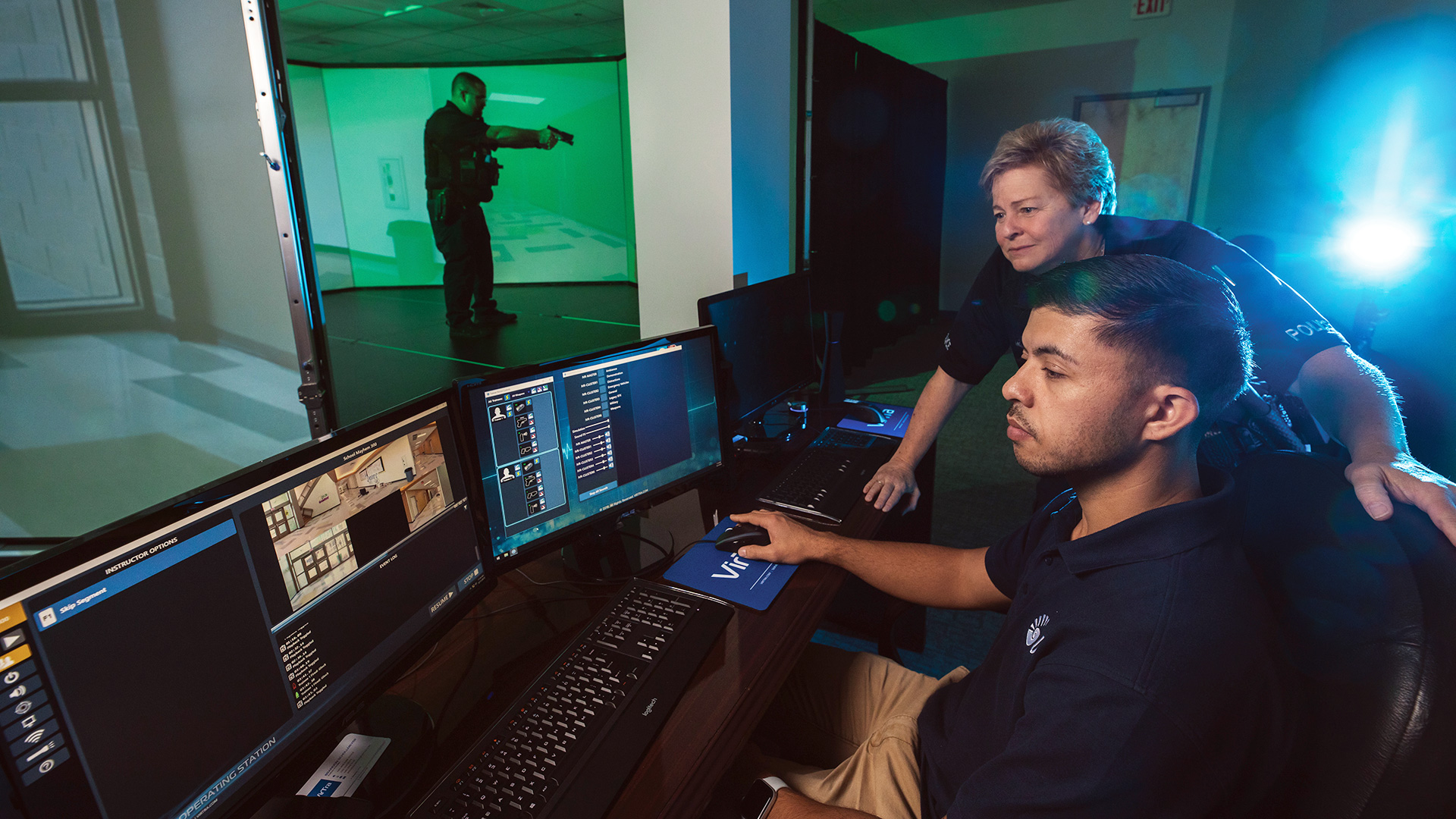
The University of West Florida (UWF) Center for Behavior Analysis is offering an immersive training experience for law enforcement officers with its state-of-the-art, five-screen virtual reality simulator.
The VirTra 300 LE firearms training simulator runs over 300 real-life scenarios to prepare officers for the situations they will likely encounter in their careers.
Dayna Beddick, associate director of the UWF Center for Behavior Analysis, said the training can improve officer behavior in tense situations: “We wanted to push the mission for the Center for Behavior Analysis. Our science can solve a lot of world problems.”
The simulator is a 15-foot-by-15-foot enclosure consisting of five video panels. The officer in training steps within the room and is immersed in a scenario, whether it’s making an arrest, de-escalating a situation or saving people from a mass shooter.
“You can simulate just about any type of scenario you can think of and put officers through it in a safe way.”
During a training simulation, a VirTra technician (an officer trained in using the program) uses a computer outside to control the program and tweak the situation based on the officer’s choices.
While the COVID-19 pandemic slowed down the use of the training simulator, things are speeding up recently, with UWF Army ROTC cadets, Pensacola Police Department officers and Escambia County Sheriff’s Office deputies and cadets using the system for training.
Beddick said the goal is to improve training “fluency,” a behavioral state when a person performs an action so frequently it becomes second-nature and routine.
“Law enforcement … is always in need of more training. We expect them to do the unobtainable. One minute they could be helping an old lady or helping a cat out of a tree, and then, the next minute they’re serving papers. And, the next minute they could be in crossfire,” Beddick told the Pensacola News Journal. “So just looking at it from an environmental point of view, which is what behavior analysts do, my first thought has been that training to fluency helps eliminate mistakes, biases and everything.”
UWF Police Chief Marc Cossich said his officers use the simulator “all the time.”
“I think its biggest benefit is probably — well, the name says it all — the biggest thing is that it is ‘virtual’ training, which means you can simulate just about any type of scenario you can think of and put officers through it in a safe way.”
Cossich said that technicians can realistically control the outcome of the scenario based on the trainee’s actions, thus reinforcing certain positive behaviors.
“There are scenarios where the officer has to talk someone down who is either wanting to harm themselves or harm someone else,” Cossich said. “Though, what’s great about it is that the technician who is running it is also an officer, and if the officer who is going through the training says the right things, then the technician can control the program and make the situation successfully de-escalate.”
Trainees even wear a shocking device to simulate getting shot when they enter the simulator.
“You have a device that you carry on your belt, not on your spine, but on the right of your back that if you get shot, you are going to get shocked a little bit,” Cossich said. “I mean, it doesn’t hurt. But it does catch you off guard a little bit to let you know that you are shot. It doesn’t mean you are dead, but you’re shot.”
After the training session, officers are critiqued on their actions and discuss what they can do to improve.
As seen in the January 2022 issue of American Police Beat magazine.
Don’t miss out on another issue today! Click below:





